Sitona weevil
Sitona discoideus
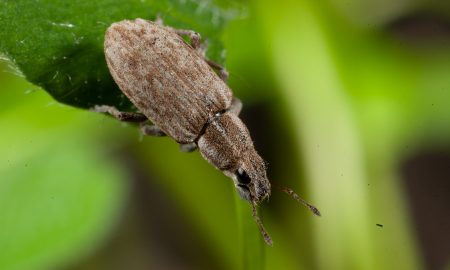
Photo by Andrew Weeks, Cesar Australia
Summary Top
These small weevils are commonly associated with medic pastures and lucerne, and can be identified by a short, broad snout and three pale stripes on the thorax. The adults can be particularly destructive to emerging seedlings in autumn, and larvae can stunt plant development in spring.
Occurrence Top
Native to the Mediterranean region, sitona weevil has been introduced to Australia, Europe, North Africa, South Africa and New Zealand. In Australia it is a widely distributed and sporadic pest that is a major problem in South Australia, and minor in New South Wales, Victoria, Tasmania, Queensland and Western Australia.
Description Top
Adults are 3-5 mm long and greyish-brown in colour with three characteristic pale (white-yellow) stripes on the thorax behind the head. They have a short, broad snout and are capable flyers. Larvae are white and legless, with an orange-brown head capsule and grow up to 5 mm long and live in soil near plant roots.
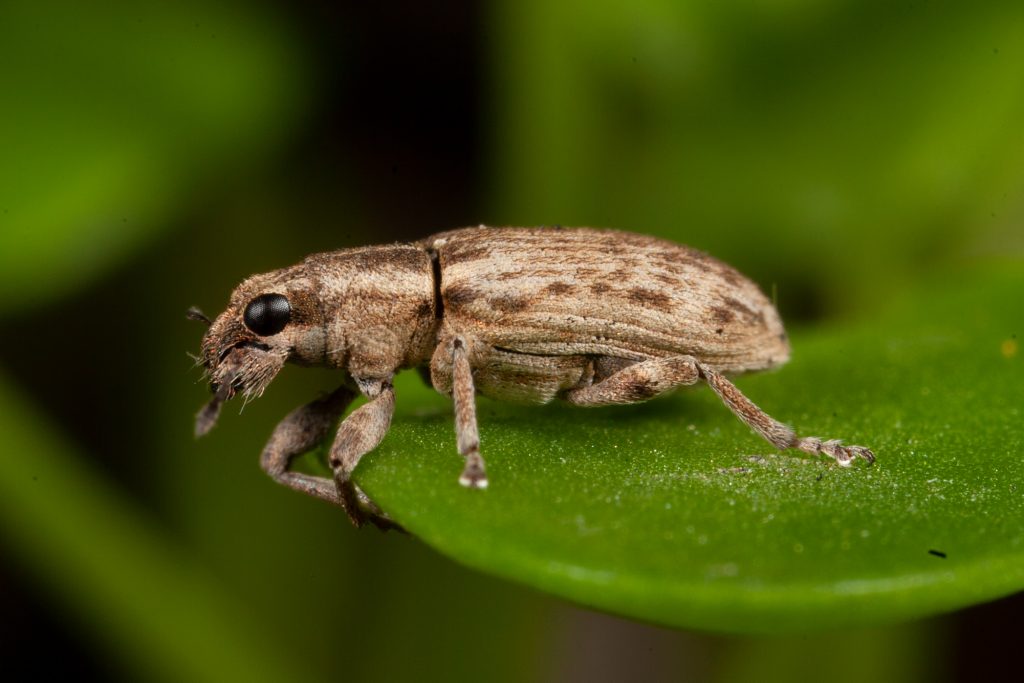
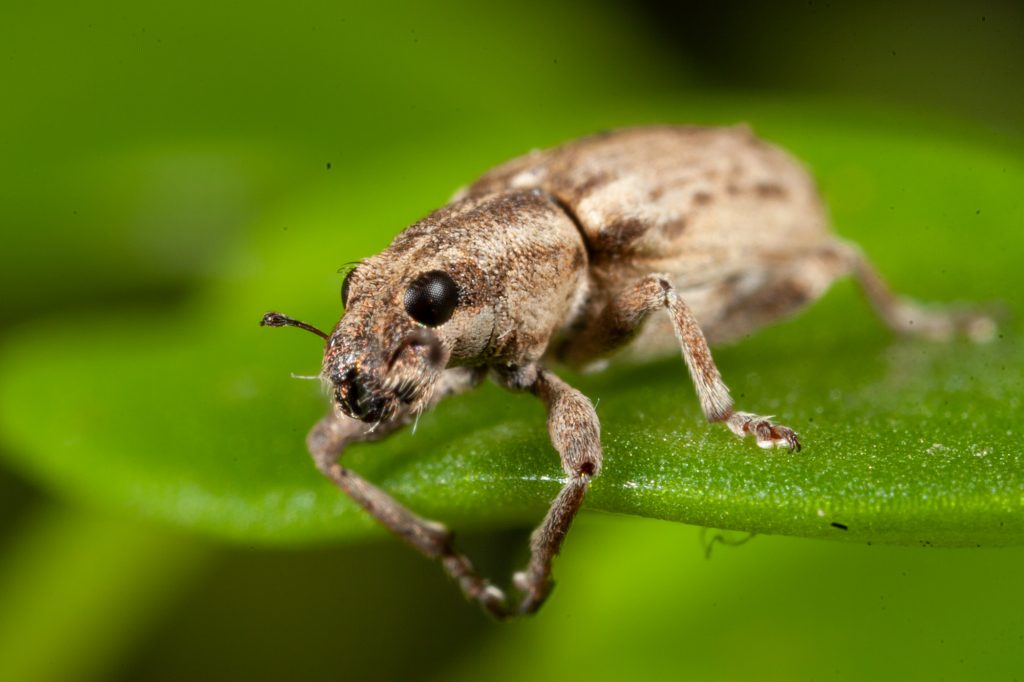

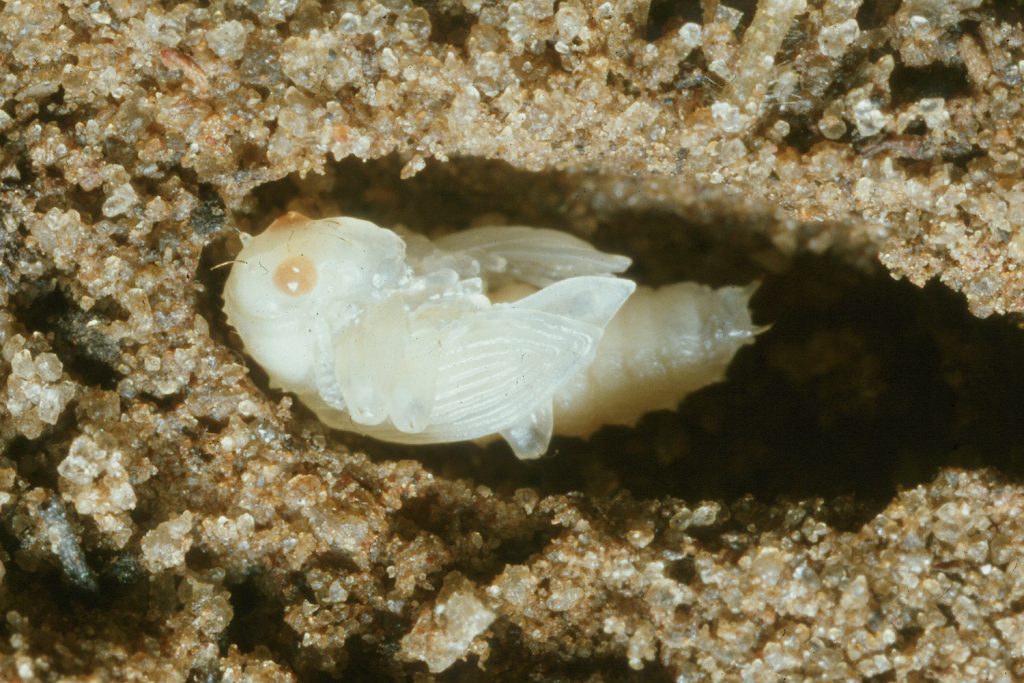
Lifecycle Top
Adults are active on winter pastures from spring to autumn. Eggs are laid in autumn in soil around the base of plants. Larvae hatch at opening rains, burrow into the soil and feed through winter into spring. Pupation takes place in the soil and adults emerge in late spring/early summer and remain active until autumn.

Behaviour Top
Sitona weevils are most commonly found in the soil, under medic and lucerne pastures. Adults can fly considerable distances, so infestations can start without a previous history of damage.
Similar to Top
Larvae are similar to larvae of the small lucerne weevil and the vegetable weevil. Adults can be confused with the whitefringed weevil, which are typically twice the size of sitona weevil.
Crops attacked Top
Medic pastures, lucerne and subterranean clover.
Damage Top
As both adults and larvae feed on host plants, damage may occur at any time during the growing season. Adults make scallop-shaped notches on leaf margins and chew the stems of seedlings and established plants. Heavy infestations can lead to complete defoliation of plants. Larvae feed on root hairs and root nodules, which can slow plant growth and reduce the plants’ ability to fix nitrogen. Older larvae feed on lateral and taproots. Affected plants may lack vigour and look pale in appearance.
If adults are active during seed germination at the break of season, they will feed on leaves and stems, potentially killing the young plants.

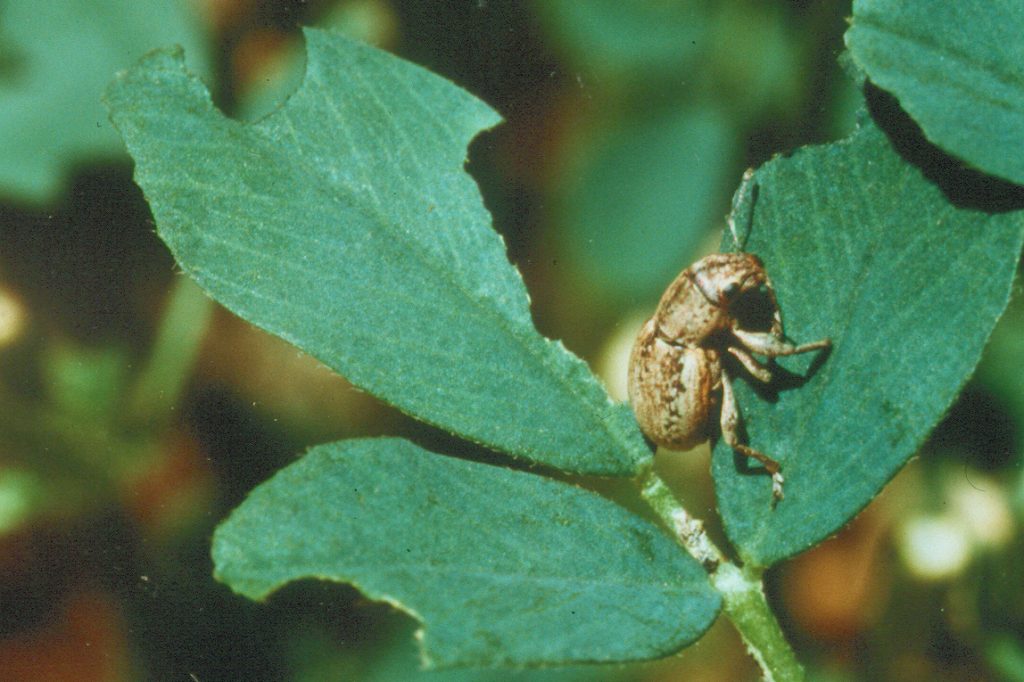
Monitor Top
Damage may occur at any time of the season, but feeding during autumn is typically the most critical. Lucerne and medic seedlings should be monitored in autumn to detect signs of damage by adult sitona weevil. Inspect root nodules for the presence of larvae. In spring, look for signs of chewing damage on plants as well as a loss of plant vigour. It is best to search for adults at night by inspecting plants and looking directly on the soil surface. Pitfall traps are also an effective technique to assess the abundance of adult sitona weevils.
Economic thresholds Top
There are no economic thresholds established for this pest.
Management options Top
Biological
A parasitoid wasp (Microctonus aethiopoides) was released into Australia in 1977 as a biocontrol agent for adult sitona weevils, which it can kill or at least reduce fecundity of females.
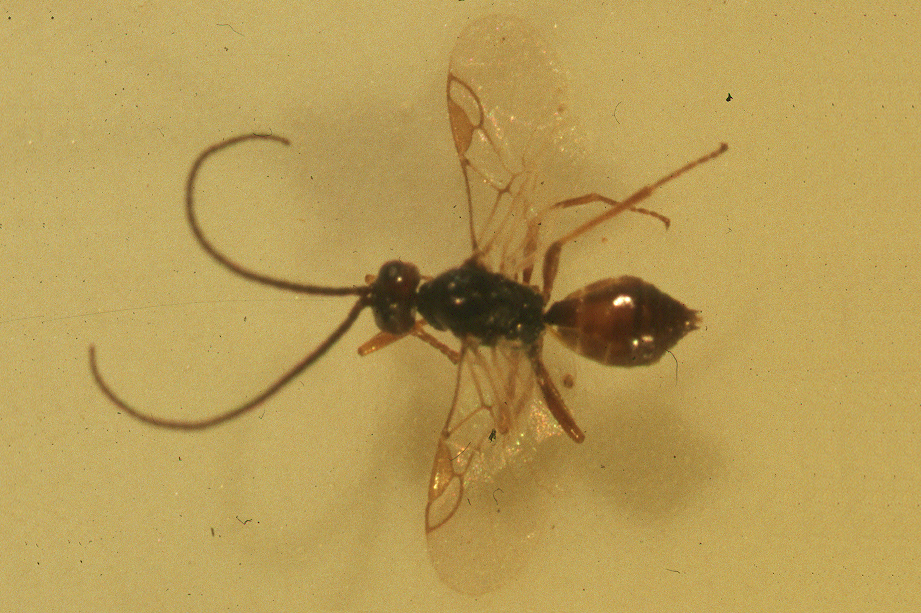
Cultural
Sowing non-preferred crop types may be useful in paddocks with a history of sitona weevil problems. Delay sowing on medics and pastures to late autumn/early winter after flights of sitona weevil have ceased.
Chemical
There are several insecticides registered for control of sitona weevils, however the economic returns of spraying are questionable. Adults should only be controlled if there are large numbers causing extensive leaf loss. Larvae are protected in the soil and cannot be effectively controlled with chemical sprays.
Acknowledgements Top
This article was compiled by Paul Umina (cesar) and Bill Kimber (SARDI).
References/Further Reading Top
Bailey PT. 2007. Pests of field crops and pastures: Identification and Control. CSIRO Publishing, Melbourne, Australia.
Goldson S., Frampton ER, Barratt BIP, Furguson CM (1984). The seasonal biology of Sitona discoideus Gyllenhal (Coleoptera: Curculionidae), an introduced pest of New Zealand lucerne. Bulletin of Entomological Research 4: 249-259.
Henry K, Bellati J, Umina P and Wurst M. 2008. Crop Insects: the Ute Guide Southern Grain Belt Edition. Government of South Australia PIRSA and GRDC.
Hopkins D. 1987. Sitona weevil. Department of Agriculture South Australia FactSheet. FS 22/78.
| Date | Version | Author(s) | Reviewed by |
|---|---|---|---|
| February 2015 | 1.0 | Paul Umina (cesar) and Bill Kimber (SARDI) | Garry McDonald (cesar) |
What are PestNotes?
PestNotes are information sheets developed through a collaboration between Cesar Australia and the South Australian Research and Development Institute (SARDI). Copyright: © All material published in PestNotes is copyright protected by Cesar Australia and SARDI and may not be reproduced in any form without written permission from both agencies.
Disclaimer
The material provided in PestNotes is based on the best available information at the time of publishing. No person should act on the basis of the contents of this publication without first obtaining independent, professional advice. PestNotes may identify products by proprietary or trade names to help readers identify particular products. We do not endorse or recommend the products of any manufacturer referred to. Other products may perform as well as or better than those specifically referred to. Cesar Australia and PIRSA will not be liable for any loss, damage, cost or expense incurred or arising by reason of any person using or relying on the information in this publication. Any research with unregistered pesticides or products referred to in PestNotes does not constitute a recommendation for that particular use.

